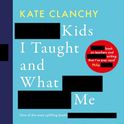The ushering onto our screens this month of a Netflix documentary about the disappearance of Madeleine McCann in 2007, following the Oscar-nominated Detainment (about James Bulger), Conversations With A Killer: The Ted Bundy Tapes, The Case Against Adnan Syed, The Staircase, Making A Murderer, Casting JonBenét, and Amanda Knox, begs the question of whether we run the peril of running out of entertaining murders at some point. You could add podcasts such as Serial, S Town and My Favorite Murder, and fictionalised shows such as American Crime Story, Mindhunter and Waco, to obtain a fuller picture of the veritable deluge of true crime we are experiencing.
While human beings have doubtless always derived a scabrous sort of enjoyment from other people’s tragedies, it does feel like there has been a spike in this sort of output in recent years—no doubt hastened on by the popularity, in short succession, of This American Life’s Serial and of Making A Murderer, also on Netflix.
On the back of this growing predilection, the magazine Crime Monthly hit newsstands recently: a fantastically gruesome object, the first issue features Milly Dowler as its “cover star,” mocked up in the centre of a Heat magazine-style spread of other competingly grim stories, such as the so-called “Backpacker Murder” of Grace Millane in 2018.
https://twitter.com/pressgazette/status/1103345492308738048
In a statement remarkable for its guileless venality, Rob Munro-Hall, Managing Director of Bauer Media (the magazine’s publisher) said: “Fascination in real-life crimes is exploding on all platforms, and we’re excited to be the first publisher to take advantage of this new opportunity.”
Indeed. And the question of making coin off the back of crime is not the only ethical consideration thrown up by the true crime genre. For instance, the podcast S-Town, ostensibly a murder investigation, cheerfully outs a deceased man and withholds news of its subject’s suicide for suspense. (The Onion’s satirical podcast, A Very Fatal Murder, bazooka’d the programme’s ethics, notably in a scene where the murder victim’s parents are forced to read out an advert through their tears.)
Casting JonBenét, which explores the murder of child beauty pageant contestant JonBenét Ramsey, attempts to ward off suspicions of ethical compromise by having actors audition for the roles of people involved in Ramsey’s death, painting itself as a look at the phenomenon of her death rather than an investigation into the truth. But the film still fetishises elements of the case in the public domain, such as Ramsey’s mother’s phonecall to police after apparently finding a ransom note regarding her daughter in the family home.
This avalanche of true crime material has roots in several factors, including the advent of streaming, and the fact of reality TV having been legion for a couple of decades at least. The links between binge culture and addictive crime shows seems obvious, with the “reality” of events increasing the suspense created through the gradual unveiling of procedural material.
Reality TV, in turn, provides the context and culture for this efflorescence: the parameters of reality television mean that the TV-watching public is by now used to real people being characters, and to the ethical leaps of the form. As reality TV has palled, greater stakes are needed to grab the attention—which might account for the “crime” part of the “true crime” equation.
It feels, too, like we are in an age that prizes verisimilitude above imagination: year after year, the films winning Oscars are often those based on real events. It may be that real stories are the most appropriate form for a culture that finds it difficult to disconnect; imaginary narratives represent too much of an unmooring for people who wish to remain in touch.
Our prurient attraction to crime, gore and the misery of others is not new: equivalent publications to Crime Monthly (though tamer) can be traced back at least to Victorian times—an era when Jack the Ripper was turned into a species of folk legend. But today’s fixation, and the sheer barrage of content it brings with it, can make us forget standards and neglect others. We lose in the variety and styles of storytelling we watch. And perhaps, just perhaps, we lose something of ourselves when we slow down to gawp at the car crash as we pass.
While human beings have doubtless always derived a scabrous sort of enjoyment from other people’s tragedies, it does feel like there has been a spike in this sort of output in recent years—no doubt hastened on by the popularity, in short succession, of This American Life’s Serial and of Making A Murderer, also on Netflix.
On the back of this growing predilection, the magazine Crime Monthly hit newsstands recently: a fantastically gruesome object, the first issue features Milly Dowler as its “cover star,” mocked up in the centre of a Heat magazine-style spread of other competingly grim stories, such as the so-called “Backpacker Murder” of Grace Millane in 2018.
https://twitter.com/pressgazette/status/1103345492308738048
In a statement remarkable for its guileless venality, Rob Munro-Hall, Managing Director of Bauer Media (the magazine’s publisher) said: “Fascination in real-life crimes is exploding on all platforms, and we’re excited to be the first publisher to take advantage of this new opportunity.”
Indeed. And the question of making coin off the back of crime is not the only ethical consideration thrown up by the true crime genre. For instance, the podcast S-Town, ostensibly a murder investigation, cheerfully outs a deceased man and withholds news of its subject’s suicide for suspense. (The Onion’s satirical podcast, A Very Fatal Murder, bazooka’d the programme’s ethics, notably in a scene where the murder victim’s parents are forced to read out an advert through their tears.)
Casting JonBenét, which explores the murder of child beauty pageant contestant JonBenét Ramsey, attempts to ward off suspicions of ethical compromise by having actors audition for the roles of people involved in Ramsey’s death, painting itself as a look at the phenomenon of her death rather than an investigation into the truth. But the film still fetishises elements of the case in the public domain, such as Ramsey’s mother’s phonecall to police after apparently finding a ransom note regarding her daughter in the family home.
This avalanche of true crime material has roots in several factors, including the advent of streaming, and the fact of reality TV having been legion for a couple of decades at least. The links between binge culture and addictive crime shows seems obvious, with the “reality” of events increasing the suspense created through the gradual unveiling of procedural material.
Reality TV, in turn, provides the context and culture for this efflorescence: the parameters of reality television mean that the TV-watching public is by now used to real people being characters, and to the ethical leaps of the form. As reality TV has palled, greater stakes are needed to grab the attention—which might account for the “crime” part of the “true crime” equation.
It feels, too, like we are in an age that prizes verisimilitude above imagination: year after year, the films winning Oscars are often those based on real events. It may be that real stories are the most appropriate form for a culture that finds it difficult to disconnect; imaginary narratives represent too much of an unmooring for people who wish to remain in touch.
Our prurient attraction to crime, gore and the misery of others is not new: equivalent publications to Crime Monthly (though tamer) can be traced back at least to Victorian times—an era when Jack the Ripper was turned into a species of folk legend. But today’s fixation, and the sheer barrage of content it brings with it, can make us forget standards and neglect others. We lose in the variety and styles of storytelling we watch. And perhaps, just perhaps, we lose something of ourselves when we slow down to gawp at the car crash as we pass.












